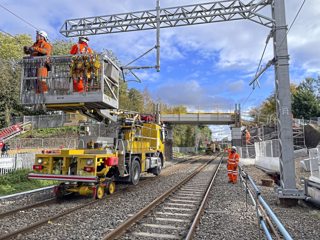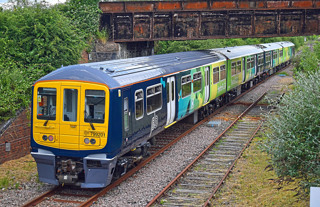The 1739 Penzance to London Paddington trains have started to carry unusual passengers… brownish-red, with ten legs and two pincers.
These are live lobsters, being ferried from Cornwall to top London restaurants as part of a new venture to transport fresh produce by high-speed train, started on December 1 2015 by InterCity RailFreight and Great Western Railway.
Shellfish caught fresh from the sea are packed in water-filled carriers and taken to Penzance station, where they are loaded into power cars and compartments on the train. Upon arrival at London they are collected by a local courier service, which delivers them to their final destinations.
But why go to all this trouble, when a van could just as easily take them by road directly from sea to eatery?
One big advantage of transporting goods by rail is the time saving. The train from Cornwall to London takes just over six hours, and is already scheduled to run. A road journey takes a comparable time, but a courier travelling by road would have to travel from London to Cornwall and back again, thus taking twice the time.
Additionally, delivery would typically be made not by car or van, but by HGV. A haulier would typically average 30mph point to point (so at least ten hours to go 300 miles between Penzance and central London), taking into account the 56mph maximum speed limit and the need for two 45-minute statutory driver’s breaks en route (route planning websites tend to forget such things).
Hauliers will also build in additional recovery time, just like train operators, to take account of the vagaries of the road network. In Cornwall (like Scotland) this will be the weather in winter and tourists in summer, as well as the general unpredictability of the M5 and M4 and inner-London roads.
And after arriving in the capital, the vehicle would have to be driven to a north London depot, ‘deconsolidated’ with the produce, then taken by a second van into the city centre.
Thus the direct journey means that the lobsters are much fresher when they arrive, so the fishermen who catch them can demand a higher price for them. This in turns improves sustainability, by creating more business opportunities for local fisheries.
Then there’s the environmental impact. By reducing the number of vans on the road, lower carbon emissions will be produced.
Cost is also an important factor. According to InterCity RailFreight, not only is it slightly cheaper to transport goods by rail, the trains are also fully insured to ensure that suppliers do not lose out in cases of damage or theft. This is at no additional cost, which would not be the case with a van courier.
So is transporting freight by high-speed rail the way forward?
The biggest potential for this scheme is parcel delivery. Back in 1963, British Rail started the Red Star parcel service, whereby people could take packages to their local railway station, to be delivered by rail to other stations. Red Star parcels later joined up with local courier services to allow for a door-to-door delivery service, which was faster than Royal Mail and enabled same-day delivery.
However, the service gradually declined in the 1990s due to two factors: the end of British Rail and the reduction in the number of staff on passenger services.
During privatisation, moving small freight goods by rail was seen as a low-quality service, and was gradually discontinued. And once van guards were no longer required on rail services, it was impractical for the train guard to both run a train and handle parcels at the same time.
Since then, however, another parcel delivery service has started up in the Midlands. From October 2010, East Midlands Trains and supply chain management company 5PL have transported parcels and legal documents on Nottingham to London St Pancras trains. It’s a similar method to the Red Star parcels deliveries, except that the couriers (not railway staff) load the parcels onto services.
The biggest delivery demand so far has been for medical samples. Carrying these by high-speed rail has a huge advantage over road as these products are time-critical - they need to be out of laboratories for as little time as possible to keep the cells in the samples alive. InterCity RailFreight estimates that travelling from Nottingham to London takes at least a third less time by rail than road, as well as knocking a quarter off the price.
There are also high-speed delivery services outside of the UK. Eurostar has its own express delivery service called Esprit Eurostar, which transports parcels between London, Paris and Brussels on a daily basis.
So why are these delivery services becoming increasingly popular now, when 15 years ago they were in decline?
According to InterCity RailFreight, there are two key reasons. Firstly, it is easier to transport parcels on the trains of today, because technology has improved significantly. IT systems allow parcels to be tracked throughout their entire journey, reducing risk of them being lost or stolen on the train.
Secondly, there is more call for parcel delivery in general, owing to the rise in online shopping. The more capacity there is to offer same-day delivery for parcels, the better the service for customers and the more demand will continue to rise.
So could we see more train operating companies (TOCs) offering freight transportation services in future?
The main concern for TOCs is the potential for service disruption, with passengers their clear priority. However, InterCity RailFreight says it has recorded no significant delays for East Midlands Trains’ and GWR’s delivery trains since they started.
And is there potential for HST delivery services to replace traditional rail freight? With capacity on the railways an ongoing issue, adding freight wagons on the back of high-speed passenger services is an option. ICRF is looking at the potential to convert displaced Mk 3s into joint passenger-freight vehicles, which would increase capacity on the railway and accommodate more goods and passengers (RAIL 793).
Rail Freight Group Executive Director Maggie Simpson believes that there is the possibility of developing markets for high-speed rail deliveries, without replacing the need for conventional rail freight.
Nick Gallop, director of Intermodality, is of a similar opinion, saying that this scheme is not intended to replace freight as only a small volume of goods can be transported on passenger services.
High-speed rail delivery services certainly look like a viable option for the future, and have so far proved successful for transporting lobsters and parcels. So keep an eye out on the HSTs you travel on - you may soon be able to send your post at the same time!
- This feature was published in RAIL 794 on February 17 2016.


















Bren Stafford - 07/07/2018 18:12
Red Star parcels should be revived. With IT facilities and a maximum weight limit of, say, 10 kilograms, a modern day service could easily be reintroduced, similar to Kurier Dienst on Deutsche Bundesbahn.